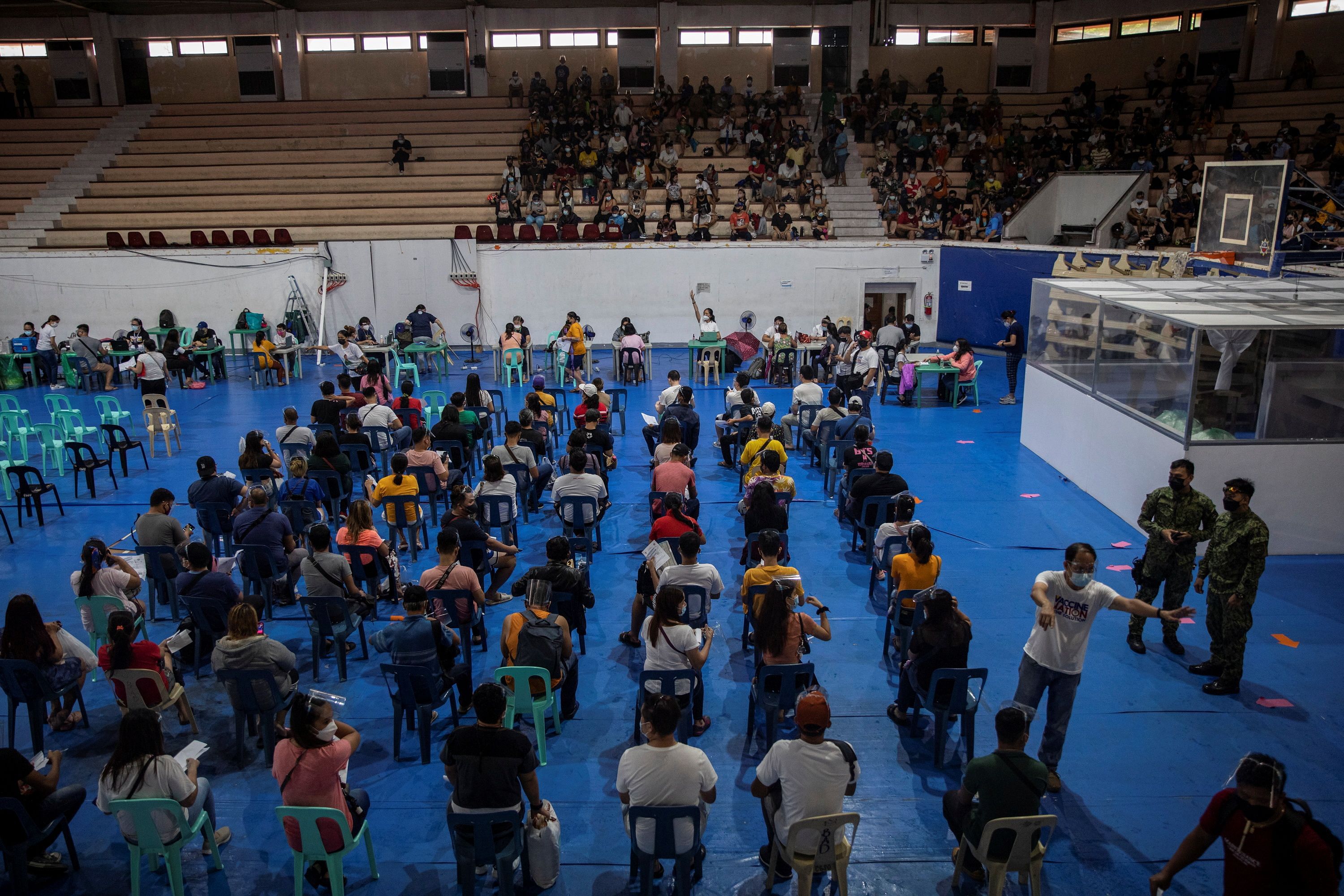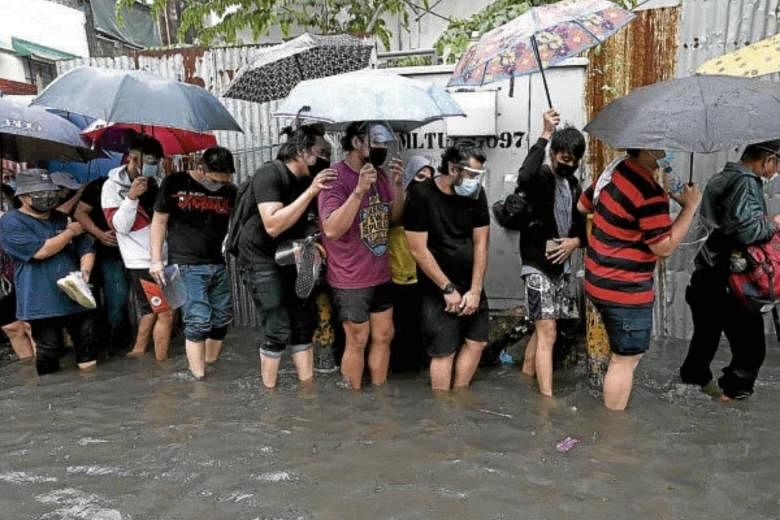MANILA (PHILIPPINE DAILY INQUIRER/ASIA NEWS NETWORK) - Neither rain nor flood dampened the Covid-19 vaccine roll-out in Manila on Wednesday (July 21), indicating Filipinos' willingness to get vaccinated, but it also presented a potential health risk from waterborne diseases.
Thousands waded through ankle- to knee-high floodwaters to get into San Andres Sports Complex, one of many vaccination hubs in the capital city.
Ms Ana Michelle Malonzo, an employee of a fast-food restaurant, said she had no choice but to await her turn, even in the flood, because getting vaccinated is a requirement for work.
Similarly, Mr Philip Tuliao queued for a Sinovac shot in the rain.
"I don't mind getting wet as long as I can get a vaccine. I have this raincoat, anyway," he told Inquirer Radio.
The city government allocated 2,997 doses of various vaccine brands to the San Andres hub for seniors, people with health issues, workers and members of indigent communities.
"Rain and flooding will not stop us, just as Covid-19 doesn't… rest," said Mayor Francisco Domagoso. "We can assess later but rest assured the city government of Manila will not stop (the vaccination)."
The mayor had earlier vowed to step up Manila's pandemic response following the detection of the more contagious Delta variant in the city.
But Dr Rontgene Solante, an infectious diseases expert at Manila's San Lazaro Hospital and a government adviser on Covid-19 vaccines, said that local governments could suspend the roll-out for a day if the situation warranted it.
"You can't risk lives just to get vaccinated. With the habagat (south-west monsoon) and flooding, the next problem could be leptospirosis," Dr Solante said, warning of an increase in such cases in the next weeks due to the wet season.
Dr Solante said the city government may shift to home vaccination during days of heavy rainfall to keep people from having to risk their health outdoors.
He also recommended that personnel at local vaccination hubs advise people to wear protective shoes, or simply to avoid flooded areas.
Speaking later at the presidential palace media briefing, Dr Solante said there now appears to be local transmission of the Delta variant, citing the cases documented by the Philippine Genome Centre.
Independent pandemic monitor Octa Research on Wednesday flagged 11 cities as high risk for Covid-19, based on such factors as high average daily attack rate, intensive care unit utilisation and positivity rates.
The 11 cities are Davao, Cebu, Iloilo, Bacolod, Makati, Cagayan de Oro, General Santos, Baguio, Taguig, Laoag and Mariveles.
According to Octa, Davao continued to log the highest average number of new cases, with around 218 new infections daily from July 14 to 20. The city's ICU utilisation rate was also tagged as very high at 91 per cent.
In its daily case bulletin, the Department of Health said it had recorded 6,560 new Covid-19 infections, bringing the total number to 1,524,449.
At the presidential palace media briefing, Dr Solante said elimination strategies, such as border controls, compliance with minimum public health protocols, avoiding superspreader events, and testing, tracing and isolation programmes, should be intensified to stop the spread of the Delta variant.
He said the government should also continue with its vaccine roll-out "because all vaccines, at this moment, are still working and will work especially against these variants of concern".

According to Dr Solante, the symptoms of those infected by the Delta variant do not differ from those infected by the original virus: cough, fever, myalgia or pain in muscle, headache and sore throat, as well as loss of smell and taste.
But it has been observed that those afflicted by the Delta variant tend to have a higher viral load, which could increase their risk of getting hospitalised, he said.
"So this is why with one interaction, a single individual can infect as (many) as eight to as (few) as four. Overall, it is 97 per cent highly transmissible," he said.
Dr Solante also said the Delta variant's high transmissibility and high reproduction rate also meant that it could spread more in households than in other areas.











